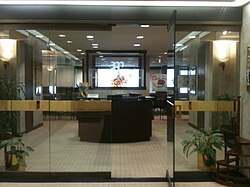 | |
 | |
| Abbreviation | AAM |
|---|---|
| Founded | 1906 |
| Founded at | Washington, D.C., U.S. |
| Type | Non-profit association |
| 53-0205889 [1] | |
| Focus | Museums, including professionals and volunteers |
| Location |
|
| Website | aam-us.org |
Formerly called | American Association of Museums |

The American Alliance of Museums (AAM), formerly the American Association of Museums, [2] is a non-profit association whose goal is to bring museums together. Founded in 1906, the organization advocates for museums and provides "museum professionals with the resources, knowledge, inspiration, and connections they need to move the field forward." [3]
Contents
- History
- Media and Technology Committee
- Presidents/Chairpersons
- Directors/Presidents
- See also
- References
- External links
AAM represents the scope of museums, professionals, and nonpaid staff who work for and with museums. AAM represents more than 25,000 individual museum professionals and volunteers, 4,000 institutions, and 150 corporate members. Individual members include directors, curators, registrars, educators, exhibit designers, public relations officers, development officers, security managers, trustees, and volunteers.
Museums represented by the members include art, history, science, military, maritime, and youth museums, as well as public aquariums, zoos, botanical gardens, arboretums, historic sites, and science and technology centers.
At the 2014 American Alliance of Museums conference, the Institute of Museum and Library Services announced there are now at least 35,000 museums in the US. [4]